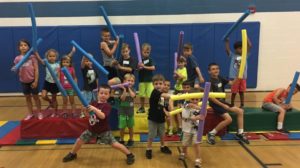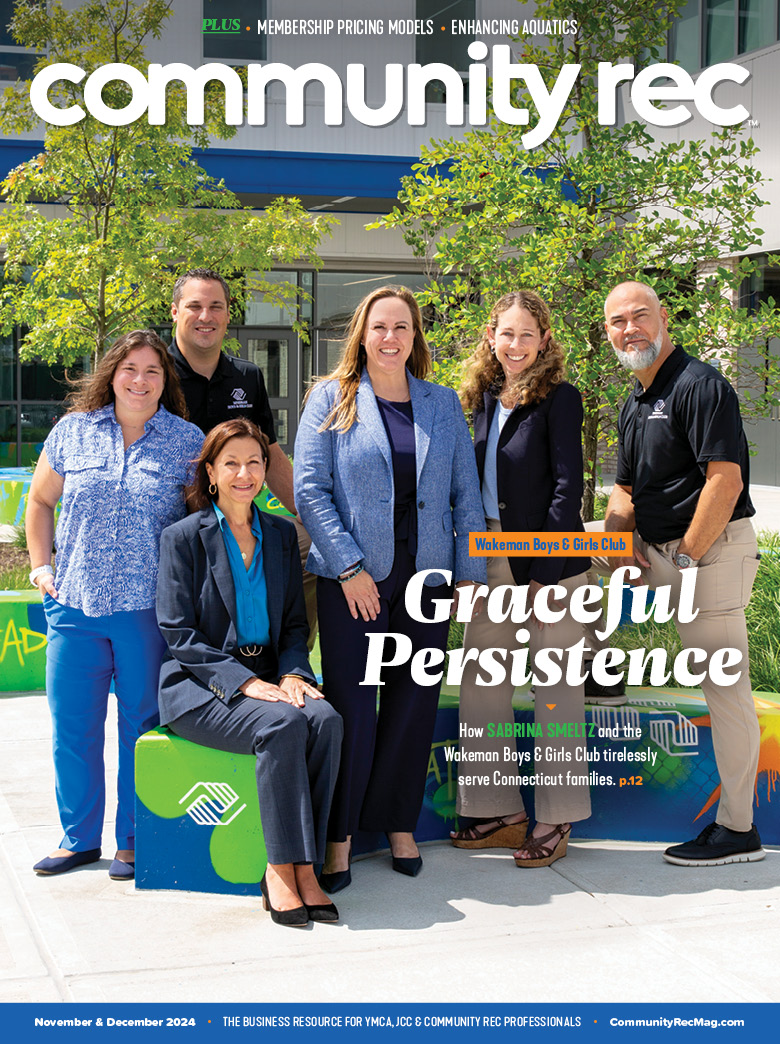As technology continuously guides the attention of today’s youth through video games and television, it’s difficult to redirect them to physical play. In fact, Holly Metzger, the youth fitness director at the York JCC in York, Pennsylvania, believes it’s important to start teaching healthy habits that encourage the lifelong urge to move and play at a young age.
Metzger designed a youth program for ages three to seven called “Imagination Creative Play” that takes everyday distractions for kids, such as television and video game characters, and encourages them to use their imagination by acting out similar situations with their favorite characters, resulting in mental and physical stimulation.

The idea for the program began when Metzger was teaching a physical education class in early child care and overheard the children talking animatedly about Spider-man jumping and moving around the room. She decided to try teaching in a similar manner, with superheroes and imaginative thinking, to grab the children’s attention — and it worked.
Metzger continued the technique and built upon it by involving more characters and focusing on her verbiage and tone. “It’s really geared towards connecting with the child and what they’ve been seeing and hearing throughout their lifetime, whether it be through the competition of movies, TV or video games,” explained Metzger. “I incorporate that into the lesson plan, so they are automatically intrigued in what I have to say because I’m using the verbiage of what they’ve been hearing, then I apply it to movement.”
For example, Metzger might use a character such as Wonder Woman and tell the children they are preparing themselves for a secret mission. “You can tell a child to run from here to here, but if now you’re saying, ‘we have to hurry up and we have to capture the secret power button,’ all of a sudden, they are running faster,” described Metzger.
Another popular character for her program is pretending to be Jedi warriors from Star Wars, working together to defeat the dark side, represented as junk food and sitting on the couch watching TV or playing video games. “You’re getting the workout, the terminology and you’re getting the incorporation of working with others on the team, learning to listen and be a part of their imaginations,” said Metzger.

Sometimes the imagination play is also student-led, allowing more creative thinking. “They will talk about the story and add in, and they are so captivated because I make them a part of what is going on within my lesson,” said Metzger. “As teachers, it’s hard because you want to continue to direct, but it’s really important to get the children involved and listen to them.”
When considering adopting a similar program, Metzger emphasized the importance of research. “Do your research as far as what kids are liking at that particular time, whether it’s 2019 or 2025 — continue to keep up with what the kids are talking about, what they’re watching, and what they’re playing and doing, because they are your best teachers,” she said.
Also just as important is the use of props. “You do it for the kids — you have props and fun music playing,” described Metzger. “The sky is the limit for what you can use as props. You’re only limited by your imagination, and it can really take you to amazing places when you allow it.”.










